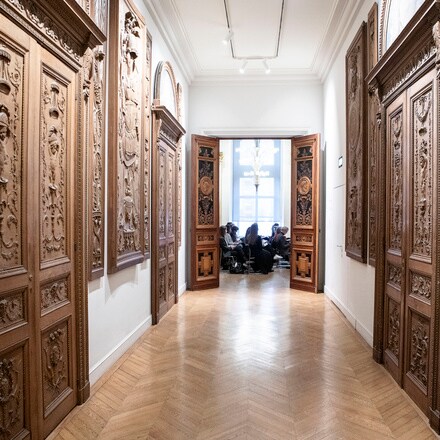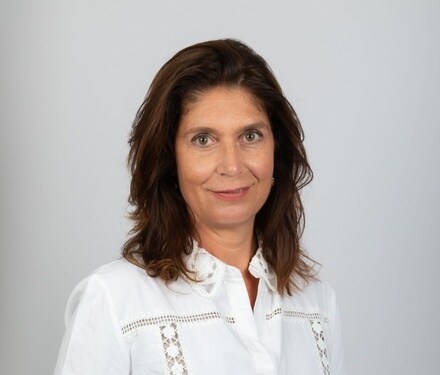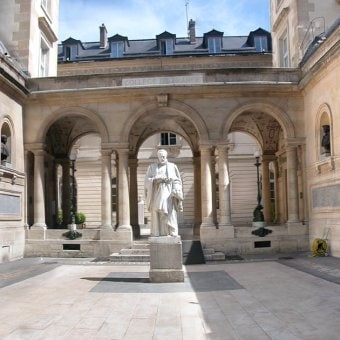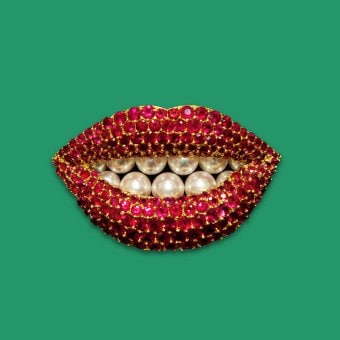
1. You have just been appointed "Directrice des musées et directrice générale adjointe des Arts Décoratifs". For you, what place does jewelry hold in the history of the decorative arts?
Jewelry occupies a key place in art history. The desire to adorn the body with precious shapes and materials emerged at an early stage, as a form of artistic expression. We can find ornaments and pendants from the Paleolithic period, made from shells, ivory, or horn. Jewelry is thus part of both the history of the decorative arts and that of the construction of appearances and the history of the body, with a strong symbolic dimension. Our rich collection, boasting almost five thousand pieces, with one thousand two hundred items exhibited from the Middle Ages to the present day, is the largest museum collection in France. More than just the permanent exhibition in our jewelry gallery, it provides us with an insight into part of this Western history, with big names like René Lalique, Line Vautrin, and Jean Després, as well as the great jewelry houses. The nineteenth century and Art Nouveau constitute the strong points of the collection, while our contemporary jewelry fund is regularly added to with new acquisitions, including our most recent ones of pieces by Helen Britton.
2. Can you tell us more about your plans and ambitions for the museum and its jewelry gallery?
I would like to give greater visibility to the jewelry gallery and integrate jewelry into the permanent collections of the Pavilion Marsan, thereby creating a dialogue between all forms of the decorative arts. Therefore, in April, the museum is hosting a “Fashion Jewelry Design Exhibit” on its modern and contemporary floors, with some one hundred pieces on display, showcasing jewelry designers from yesterday and today. The arrival of jewelry curator Mathieu Rousset-Perrier at the MAD reinforces this dynamic.
3. What exhibitions do you have planned?
We have several exhibitions planned for 2024 with different formats: major exhibitions such as The Birth of Department Stores and The Private Sphere: From the Bedroom to Social Networks, which employ a transversal approach to the arts and the decorative arts, as well as exhibitions of collections like the “Fashion, Design, Jewelry Exhibit” and an exhibition devoted to the inventor of pâte-de-verre (glass paste) sculpture and a great nineteenth-century draughtsman, Henry Cros.
The MAD will also host a major exhibition allowing the public to discover the history and works of the Maison Christofle up to its most contemporary creations, such as those of Karl Lagerfeld or Andrée Putman. Finally, the exhibition My Teddy Bear will tell the story of a toy that became a popular childhood companion in the 1920s.
4. You were the Director of the Venice Biennale in 2017, and your career at the Centre Pompidou, as well as certain exhibitions like Dancing through Life* reflect your unique character. How do you envisage this turning point in your career?
I have always been sensitive to the diversity, porosity, and intertextualities of the various fields of art. This could be seen in the exhibition Dancing through Life, which highlighted the history of the relationships between dance and the visual arts, or through my role at the Venice Biennale, where I sought to highlight artists using video, painting, textiles, and ceramics. During my last exhibition at the Centre Pompidou, Women in Abstraction**, I revisited the history of abstraction through the contributions of female artists, who for the most part, remain absent from its canonical narrative. For that exhibition, I envisioned abstraction as something that was not just reduced to painting, but as a visual language that could extend across multiple media. Artists like Sonia Delaunay or Sophie Taeuber-Arp, to name only the best known, have explored areas such as textiles, clothing, tapestry, furniture, and even jewelry. In collaboration with L’ÉCOLE, School of Jewelry Arts, we held a conference that delved deeper into the history of abstraction linked to that of jewelry. In other words, I place myself in the continuation of my approach to art, based on the transversality of practices, coming from the artists themselves, without a hierarchy of value, but simply distinguishing the nature of the artifacts, their reception, and commercialization.
Photo: "Salon des Boiseries" of the Musée des Arts Décoratifs, the venue for L'ÉCOLE, School of Jewelry Arts' Study Day.



